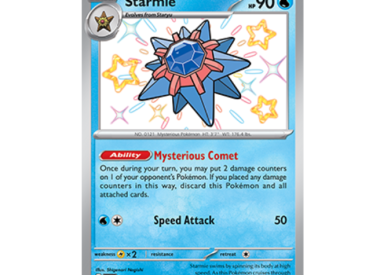Help! My computer has been infected with the Cryptolocker virus! Can I remove it? What utility tools or are available for removal? How can I decrypt or restore files encrypted by the Cryptolocker virus?
NEW: Ransomware Update: Zepto, Bart, CryptXXX, Cerber Hitting Users Hard This Month
These questions and more have been flooding the Internet for the last week as a new brand of quite nasty ransomware/malware hit the internet in September 2013 and is now plaguing a growing number of PCs. If you're reading this article then chances are you've been browsing on the internet only to discover you browser has suddenly crashed, and a message with a red background has appeared on your screen which says your personal files are now encrypted, and if you don't pay 300 dollars within 72 hours or 3 days, you've lost them forever. Yep, this is the beginning of the dreaded Cryptolocker virus ransomware that is taking many a PC user for a ride. While there's good news and bad news concerning the Cryptolocker virus, the good news is, there is a way to remove the virus and restore your files without paying the ransom. Keep reading to find out how.
What Is Cryptolocker Virus? How Did I Get Infected With The Ransomware Malware?
So how exactly does Cryptolocker virus work, and how did you manage to become infected with the malware? Basically, CryptoLocker is a ransomware program that encrypts certain files on your computer using a mixture of RSA & AES encryption. When it has finished encrypting your files, it will display the Cryptolocker payment program information (red screen). How did you manage to get Cryptolocker virus on your computer to begin with? There's a pretty good chance if you became infected with the Cryptolocker ransomware, it came to you in the form of a phishing email. Basically, one of these emails is a message that looks somewhat official and with it is some kind of attachment. It may be a .pdf or look like a scanned document of some kind. Once the attachment is opened, Cryptolocker virus begins its dirty work.
Once Cryptolocker virus has made it's way to your computer, it begins to targets files with the following extensions:
*.odt, *.ods, *.odp, *.odm, *.odc, *.odb, *.doc, *.docx, *.docm, *.wps, *.xls, *.xlsx, *.xlsm, *.xlsb, *.xlk, *.ppt, *.pptx, *.pptm, *.mdb, *.accdb, *.pst, *.dwg, *.dxf, *.dxg, *.wpd, *.rtf, *.wb2, *.mdf, *.dbf, *.psd, *.pdd, *.pdf, *.eps, *.ai, *.indd, *.cdr, *.jpg, *.jpe, img_*.jpg, *.dng, *.3fr, *.arw, *.srf, *.sr2, *.bay, *.crw, *.cr2, *.dcr, *.kdc, *.erf, *.mef, *.mrw, *.nef, *.nrw, *.orf, *.raf, *.raw, *.rwl, *.rw2, *.r3d, *.ptx, *.pef, *.srw, *.x3f, *.der, *.cer, *.crt, *.pem, *.pfx, *.p12, *.p7b, *.p7c
For those who don't know much about computers, files like .doc or .docx would be your word documents, while .jpg and .img target your photos, just to name a few of the files which are being attacked. When Cryptolocker ransomware finds files with these extensions, it encrypts them using a public key and then makes a record of the file in the Windows registry under HKEY_CURRENT_USERSoftwareCryptoLockerFiles.
After all the encryption competes, you then get the dreaded red screen demanding the malware removal ransom. Although payment will result in decryption of your files, many professionals are suggesting you not pay the fines right away as there are other free ways to remove the virus and restore your files. Here's how.
Cryptolocker Virus Removal: What To Do Once You Realize You Are Infected
1) If your computer has been infected by CryptoLocker, disconnect from your wireless or wired network right away to prevent further file encryption.
2) Remove the malware either using the free Malwarebytes program featured in the video below or using a paid antivirus program on your computer .
How to Decrypt / Restore Files Encrypted By The Ransomware
1) You will need to do a System Restore of sorts on your files via something called Shadow copies.
2) To restore the previous version of a document or file, just right-click the file in question and choose Properties.
3) If System Restore is you should be able to see the Previous Versions tab in the Properties window. This will list all of the versions on record of the file.
4) Choose a version before the Cryptolocker infection and click either Copy or Restore
5) Want to quickly see all the shadow copies on your system? Read the next section
How to Decrypt Multiple Files Encrypted By Cryptolocker Virus At Once
1) Download ShadowExplorer — a free tool for exploring available shadow copies on your system. This tool will allow you to restore multiple files at once, which have been affected by Cryptlocker, decrypting them as they were before the infection.
2) When you install and run the tool, select the drive and the shadow copy date and time from the drop-down menu. Then, choose the folder and file you want.
3) Right-click and select Export. Choose where to restore the file.
If you have any difficulty with any of these instructions, we suggest you visit Bleeping Computer's CryptoLocker Ransomware Information Guide and FAQ which provides comprehensive and regular updates to what's new with the Cryptolocker virus ransomware.
WATCH: Malwarebytes: How to remove Cryptolocker using this free software


















